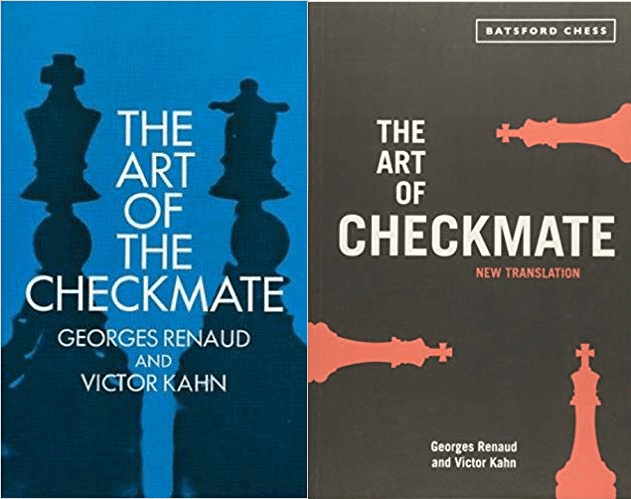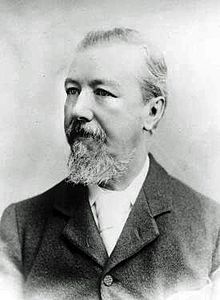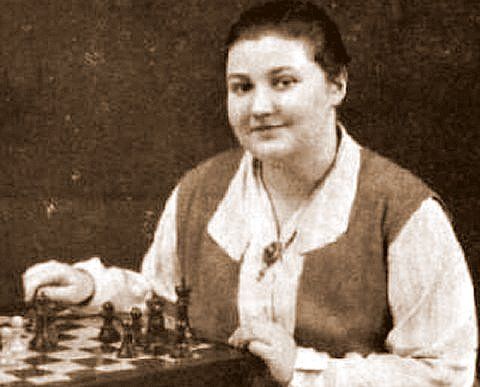Initially, this was imagined as a single post. Due to its length, we have decided to split it into two parts.
A couple of days ago, as I was browsing through my Quora feed, I stumbled on the following question:
„I am a beginner chess player but find that I always struggle to find a checkmate position and the end game becomes long and tedious even when it should be easy to finish – how can I improve this?“
Guided by the rule that if one person asked this question, there are probably others, I realized beginners 1 often struggle with checkmating the opponent’s king in a middlegame.
I also realized there is a gap in the chess literature when it comes to this topic. From the top of my head, I could quote only two good books:2 The Art Of The Checkmate by Georges Renaud and Victor Kahn and Art Of Attack by Vladimir Vuković, who are entirely devoted to attacking and checkmating the king.
Considering our previous post, 10 Endgames Every Chess Player Should Know, got a good reception, the blogger and click-baiter inside of me saw another opportunity. Since I was lucky enough to stumble on The Art Of Checkmate in my youth, I learned the value of explaining and learning essential checkmate patterns. 3
(Fun fact – I just realized the same book has two names. The earlier version was titled The Art Of The Checkmate. The newer one, translated into algebraic notation, omitted „the“ and became The Art Of Checkmate)

That is how I got the idea to write a post on the topic. On the list below, you can find 14 checkmate patterns every chess player should know. Apart from the checkmate pattern itself, I have also provided an annotated sample game featuring it, so the reader can see the attacking moves that led to it and get an overall picture of how to apply the pattern in his own game.
Hope you will find it helpful!
Back rank (corridor) mate
Let’s start with an easy one. Back rank or corridor mate utilizes the fact that a castled king (on the kingside) is blocked by its own pawns. Any check down the 8th (1st) rank that can’t be blocked is, therefore, a checkmate.
A famous example is Capablanca’s game against Bernstein from Moscow Tournament 1914:
Of course, back rank mate rarely appears in its most primitive form. There are several variations on the theme:
If you think this is too naive, bear in mind that even World Champions are prone to becoming victims to this checkmate pattern:
Smothered (Lucena’s) mate
All chess players enjoy delivering the smothered mate. There is something aesthetically pleasing in deciding the outcome with a single piece.
Out of all variations of the smothered mate, the one discovered by Lolli in 1497 is most common:

This pattern often appears in practice. Even the author of these lines delivered it several times (alas, mostly in blitz games). The following game by Paul Morphy is a good example because the checkmate is executed slightly differently:
Greco’s mate
Gioachino Greco is a famous Italian chess player from the beginning of the 16th century. He discovered numerous principles of the game (who doesn’t know his Bxh7 sacrifice).

He was also the discoverer of the following checkmate pattern:
My favorite game featuring Greco’s mate is the game between Max Lange – the inventor of the Max Lange Attack – and Adolf Anderssen, one of the strongest player of the 19th century and the creator of the famous „Evergreen“ and „Immortal“ games.
Anastasia’s mate
The following checkmate pattern, in which a knight plays the crucial role, was named after a novel from the beginning of the 18th century:
There is no better example of this checkmate than the game between Milan Vidmar and Max Euwe from Karlsbad Tournament 1929.
Even Arya Stark would be proud of this last-minute save. 4
Boden’s mate
Every chess player knows about the power of two bishops. Their ultimate potential was discovered by Samuel Boden in the 19th century:

Boden’s mate is often utilized as a threat. But sometimes, it can appear on the board, usually following a major blunder:
Blackburne’s mate
James Henry Blackburne was a strong player from the 19th century, known for his attacking and romantic style. He was also the first to execute the following combination:

I already showed the stem game of the Blackburne’s mate in my review of the Art Of The Checkmate. Since I am very fond of that game (Jerome’s Gambit!), I am going to reproduce it here:
Lolli’s mate
We are taught that a pawn on the 6th rank in the vicinity of the king is an important asset. Lolli’s checkmate patterns is the best evidence of its potential:
The following beautiful attacking game, played by Vera Menchik – the strongest female player from the first half of the 20th century – is a great example of Lolli’s mate in practice:

Allow me to repeat once again in case you missed it – this is the first part of the article devoted to checkmate patterns. The second part, titled Another 7 Checkmate Patterns Every Chess Player Should Know, is available here.
- And not only beginners
- Which also says something about my knowledge of chess books
- The review is, incidentally, the first ever Chessentials post. So if you think my current writing is bad and enjoy pointing it out, you should definitely go check that post – you’re in for a treat
- Erm, I mean – spoiler alert?

